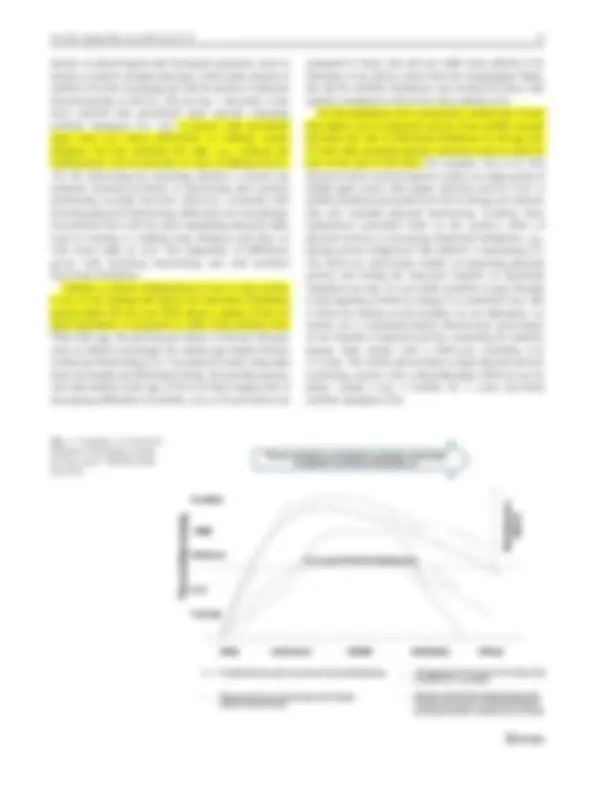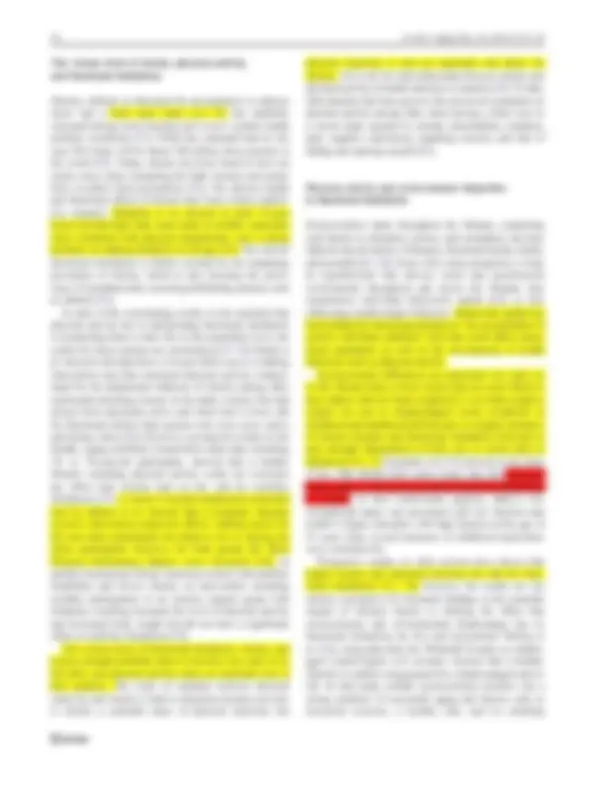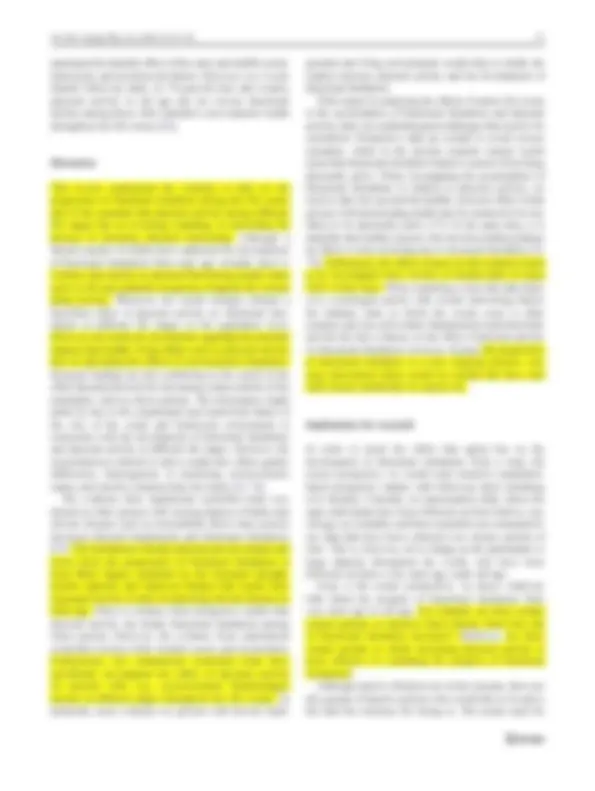






Estude fácil! Tem muito documento disponível na Docsity

Ganhe pontos ajudando outros esrudantes ou compre um plano Premium


Prepare-se para as provas
Estude fácil! Tem muito documento disponível na Docsity
Prepare-se para as provas com trabalhos de outros alunos como você, aqui na Docsity
Os melhores documentos à venda: Trabalhos de alunos formados
Prepare-se com as videoaulas e exercícios resolvidos criados a partir da grade da sua Universidade
Responda perguntas de provas passadas e avalie sua preparação.

Ganhe pontos para baixar
Ganhe pontos ajudando outros esrudantes ou compre um plano Premium
Comunidade
Peça ajuda à comunidade e tire suas dúvidas relacionadas ao estudo
Descubra as melhores universidades em seu país de acordo com os usuários da Docsity
Guias grátis
Baixe gratuitamente nossos guias de estudo, métodos para diminuir a ansiedade, dicas de TCC preparadas pelos professores da Docsity
This academic literature review explores the relationship between physical activity and functional limitations throughout different stages of life. The authors summarize research results on the progression of functional limitations and the role of physical activity in preventing risk factor accumulation. They discuss the importance of physical activity in childhood, adulthood, and older age, as well as the impact of socioeconomic disparities and perceived constraints on physical activity. The review highlights the benefits of physical activity on functional limitations and potential adverse outcomes, such as need for care at the end of life.
O que você vai aprender
Tipologia: Manuais, Projetos, Pesquisas
1 / 8

Esta página não é visível na pré-visualização
Não perca as partes importantes!





Mikaela B. von Bonsdorff & Taina Rantanen
Received: 5 August 2010 / Accepted: 20 August 2010 / Published online: 30 August 2010
Abstract In this minireview, we summarize the research results to date on the progression of functional limitations and the role of physical activity during the life course in preventing risk factor accumulation. In addition, socioeco- nomic and health disparities play a role in the development process of functional limitation throughout life. We discuss the potential role of physical activity in alleviating this process. Functional limitations usually develop gradually over an extended period of time while the level of physical functioning varies greatly already from midlife onwards. Current research strongly suggests that physical activity has a beneficial effect on functional limitations at different life stages on the population level. However, the potential impact of physical activity in alleviating the effects caused by socioeconomic disparities is inconsistent. Research findings are also conflicting on the extent of the effect of physical activity among certain subsets of the population, such as obese persons. Although the benefits of physical activity on physical impairments and functioning among the adult population have been confirmed, the number of adults who are physically active is too low and, for the majority, physical activity declines with older age. Thus, detailed research evidence is needed for designing effective preventive interventions starting from earlier ages and continuing throughout the lifespan across different sub- groups in the population.
Keywords Functional limitation. Physical activity. Life course. Accumulation. Aging
Introduction
Functional limitations, the focus of the present minireview, are defined as restrictions in performing vital situation-free physical actions needed in everyday life [1]. Functional limitation is an intermediate step on the pathway leading from pathology and impairment via functional limitations to subsequent disability [1, 2]. It is a dynamic process in which persons develop functional difficulties, e.g., in walking, from which they might temporarily recover but which later recur, or they may recover but later exhibit a new functional limitation. Here, we focus on physical functioning such as mobility measured as the ability to walk [3] or as perceived difficulties in walking [4] and on physical performance measures such as climbing stairs or lifting heavy objects [5]. Often when evaluating the functioning of older people, disability is used as a measure. However, disability is an outcome which is dependent on the environment, not just the physical capability of the person. Thus, using functional limitation as a more proximal outcome in the disablement process provides a more objective measure and can also help in investigating the consequences of disease and impairment [6]. Absence of functional limitations allows people to live independently, perform everyday tasks, and lead a socially active life [7]. For most young people, tasks such as walking or lifting boxes and bags are activities which can be performed without undue attention being devoted to them. However, with older age, managing these everyday activities becomes less self-evident. The level of physical functioning varies greatly already in midlife, with women being seriously disadvantaged compared to men [8]. With population aging, the interest of governments and individuals regarding the expected trends in physical functioning is very much driven by the wide-ranging effects that physical
Gerontology Research Centre, Department of Health Sciences, University of Jyväskylä, P.O. Box 35, Viveca 40014, Finland e-mail: mikaela.vonbonsdorff@jyu.fi
DOI 10.1007/s11556-010-0070-
functioning has on the individual’s ability to lead an independent life and the potential need of health and social care services [8, 9]. Physical activity is defined here as bodily movement that results from the contraction of skeletal muscle that increases energy expenditure above the basal level [10]. Physical exercise, including strength, endurance, and flexibility training, in turn is physical activity that is planned, structured, and repetitive in nature. Physical activity can vary from recreational exercise to everyday activities such as walking to the grocery store or gardening. Physical activity is a behavior that seems to track through the lifespan as Hirvensalo and Lintunen show in their review in this issue on page XXX. The level of physical activity has been shown to be linked with socioeconomic status throughout the lifespan. There is evidence of an association between social and psychological environments at different periods of life and health-related behaviors: for example, lower social class has been associated with physical inactivity in adolescence [11]. Physical activity in childhood and adolescence predicts both physical activity in adulthood [12, 13] and better health and well-being [14]. Similarly, persons who are physically active in midlife are more likely to continue being physically active in older age regardless of chronic diseases [15]. However, for the majority, physical activity declines with older age [16], partly due to the aging process, the deterioration of muscle tissue, and an increase in morbidity and the rate of functional decline [16–18]. The same trend can be seen among middle-aged persons as well. Prospective studies have shown that midlife muscle strength tracks over to old age and predicts functional limitations and disability. People with higher muscle strength in midlife remain protected from old age disabil- ities regardless of various diseases which may develop over the years [19, 20]. The benefits of strength training on muscle strength and functional limitations among older people have been confirmed in randomized controlled trials [21, 22]. Several well-conducted prospective studies have shown that physical activity protects against the develop- ment of chronic conditions such as cardiovascular diseases, arthritis, diabetes, and obesity [23, 24], which, in turn, have been shown to be important risk factors for functional limitations [7, 25, 26]. In the context of life course epidemiology [27], decline in functioning can either happen gradually over a long time period due to, e.g., disuse of muscles [28, 29] or it might be catastrophic due to a sudden event such as an accident [30]. We focus here on the chronic gradual decline in physical functioning which is affected by events starting pre-natally and continuing after birth through adult and old age. Using the life course perspective, we summarize the research results to date on the progression of functional limitations and the
role of physical activity during the life course in preventing risk factor accumulation. In addition, socioeconomic and health disparities play a role in the development of functional limitation throughout life. We discuss the potential role of physical activity in alleviating this process.
Functional limitations and aging
Defining functional limitation may be based on objectively measured test results with validated reference values or on an individual’s perception of specific difficulties or changes in performing the task in question. Physical performance tests typically measure upper or lower extremity functioning and can be single tests or test batteries that consist of several individual tests [6]. The most often used individual tests comprise of objective walking tests measuring habitual or maximal walking speed over certain distances [4, 31] or self- reported difficulties in walking different distances [4, 32]. The advantage of using physical performance tests is that they are objective; however, they are more difficult to carry out with large study samples. Self-report data on difficulties in walking are easier to gather, but have the disadvantage that individ- ual’s perceptions on their ability to walk certain distances or what they consider mobility difficulties can differ widely. Functional limitations such as walking difficulties increase with age. A population-based Finnish study on persons aged 55 and over found that a third of women and a fifth of men could not reach a walking speed of 1.2 m/s [32]. In the UK, 8% of women and 9% of middle-aged men reported having much difficulty or being unable to walk a quarter of a mile [33]. In the US, among 70- to 79-year-old community- dwelling persons who did not have mobility limitations at baseline, 34.3% of men and 47.4% of women developed mobility limitations over a 4.5-year follow-up [34]. In line with the disablement process [1], functional limitations such as decline in mobility can be caused by pathology such as chronic diseases [35] and impairments such as decline in muscle strength and balance [36]. On the other hand, decline in mobility is a strong predictor for subsequent adverse outcomes such as disability and dependence in old age [3, 37]. Further, a prospective study using the National Longitudinal Surveys data showed that functional limitations were likely to co-occur so that severe limitations in walking increased the probability of having difficulties in climbing stairs among young and older women [38].
The progression of functional limitations and physical activity during the life course
The gradual development of functional limitations over an extended period of time is affected by natural age-related
The vicious circle of obesity, physical activity, and functional limitations
Obesity, defined as abnormal fat accumulation in adipose tissue and a body mass index over 30, has markedly increased during recent decades and is now a public health problem worldwide [51]. WHO has estimated that by the year 2015 there will be about 700 million obese persons in the world [52]. Today, obesity has been found to have an earlier onset when comparing the baby boomer and earlier born so-called silent generations [53]. The adverse health and functional effects of obesity have been widely studied. For example, Stenholm et al. showed in their 22-year follow-up that high body mass index in midlife, especially when combined with physical impairments, was a strong predictor of walking limitation in old age [25]. The risk for functional limitations is further elevated by the expanding prevalence of obesity, which in turn increases the preva- lence of simultaneously occurring debilitating diseases such as arthritis [53]. In spite of the encouraging results on the potential that physical activity has in ameliorating functional limitations or postponing them to later life on the population level, the results for obese persons are inconsistent [54–58]. Brach et al. showed with data from a 14-year follow-up to a walking intervention trial that consistent physical activity compen- sated for the detrimental influence of obesity among older community-dwelling women. In the study, women who had always been physically active and obese had a lower risk for functional decline than persons who were never active and always obese [54]. However, a prospective study on the Health, Aging and Body Composition study data, including 70- to 79-year-old participants, showed that a healthy lifestyle including physical activity could not overcome the effect that obesity had on the risk for mobility limitations [57]. A recent 12-month randomized controlled trial by Manini et al. showed that a moderate intensity exercise intervention improved 400-m walking speed for the non-obese participants but failed to do so among the obese participants; however, for both groups the Short Physical Performance Battery score increased [58]. In another trial among African American women with mobility disabilities and severe obesity, an intervention including monthly participation in an exercise support group with telephone coaching increased the level of physical activity and decreased body weight but did not have a significant effect on mobility limitations [59]. The vicious circle of functional limitations, obesity, and muscle strength probably starts to develop very early on in life [60], and physical activity plays an important role in that equation. The order of causality between physical inactivity and obesity is hard to determine because not only is obesity a potential cause of physical inactivity but
physical inactivity is also an important risk factor for obesity. All in all, the interrelationship between obesity and physical activity on health outcomes is complex [34]. To date, little attention has been given to the perceived constraints on physical activity among older obese persons, which were in a recent study reported to include comorbidities, tiredness, pain, negative experiences regarding exercise, and fear of falling and injuring oneself [61].
Physical activity and socioeconomic disparities in functional limitations
Socioeconomic status throughout the lifespan, comprising such factors as education, income, and occupation, has been linked to the prevalence of diseases, functional decline, frailty, and mortality [62–64]. From a life course perspective, it may be hypothesized that adverse social and psychosocial environments throughout and across the lifespan may compromise individual behavioral capital [65], in turn influencing health-related behaviors. Behavioral capital has been defined by Schooling and Kuh as “the accumulation of positive individual attributes” [66] that could affect educa- tional aspirations as well as the development of health behaviors such as physical activity. Socioeconomic differences are expressed very early on in life. Parents from a lower social class are more likely to have babies with low birth weight [67]. Low birth weight is related not just to disadvantaged social conditions in childhood and adulthood [68] but also to a higher incidence of chronic diseases and functional limitations [69] and to grip strength independent of body size or social class in adulthood [70, 71]. Guralnik et al. [72] showed on the basis of the 1946 British birth cohort study data that socioeco- nomic status in adolescence predicted physical functioning in midlife. In their multivariate analysis, father’s low occupational status was associated with low function and mother’s higher education with high function at the age of 53 years when several measures of childhood deprivation were controlled for. Prospective studies on older persons have shown that higher income and education decrease the risk for func- tional limitations [73, 74]; however, the results are not entirely consistent [75]. Research findings on the potential impact of lifestyle factors in diluting the effect that socioeconomic and environmental disadvantage has on functional limitations are few and inconsistent. Britton et al. [76], using data from the Whitehall II study on middle- aged London-based civil servants, showed that a healthy lifestyle in midlife compensated for a disadvantaged start to life. In that study, midlife socioeconomic position was a strong predictor of successful aging and factors such as increased exercise, a healthy diet, and no smoking
attenuated the harmful effect of the early and midlife social, behavioral, and psychosocial factors. However, in a 5-year Danish follow-up study on 75-year-old men and women, physical activity in old age did not reverse functional decline among those with cumulative poor material wealth throughout the life course [43].
Discussion
This review summarizes the evidence to date on the progression of functional limitation during the life course and of the potential that physical activity during different life stages has on reversing, retarding, or preventing the process of declining physical functioning. Although a limited number of studies have addressed the development of functional limitations from early age onwards, there is evidence that decline in physical functioning usually starts early in life and gradually progresses alongside the normal aging process. Moreover, the results strongly indicate a beneficial effect of physical activity on functional limi- tations at different life stages on the population level. However, the results are inconsistent regarding the potential impacts that healthy living habits such as physical activity have in alleviating the effects of socioeconomic disparities. Research findings are also conflicting on the extent of the effect that physical activity has among certain subsets of the population, such as obese persons. The discrepancy might partly be due to the complicated and intertwined nature of the role of the social and behavioral environment in connection with the development of functional limitations and physical activity at different life stages. However, the inconsistencies referred to above might also reflect gender differences, heterogeneity in measuring socioeconomic status, and selective dropout from the study [43, 76]. The evidence from randomized controlled trials con- ducted on older persons with varying degrees of frailty and chronic diseases such as osteoarthritis shows that exercise decreases physical impairments and functional limitations [21]. The mechanism whereby physical activity hinders and slows down the progression of functional limitations is most likely largely explained by the increased strength, aerobic capacity, and improved balance that results from increased exercise in spite of underlying chronic diseases in older age. There is evidence from prospective studies that physical activity can hinder functional limitations among obese persons. However, the evidence from randomized controlled exercise trials remains scarce and inconsistent. Furthermore, few randomized controlled trials have specifically investigated the effect of physical activity on persons with, e.g., socioeconomic disadvantages present at different stages throughout the life course. In particular, more evidence on persons with diverse back-
grounds and living environments would help to clarify the relation between physical activity and the development of functional limitations. With respect to analyzing the effects of earlier life events in the accumulation of functional limitations and physical activity, there are methodological challenges that need to be considered. Prospective data are needed to avoid reverse causation, which in the present research context would mean that functional limitation hinders a person from being physically active. When investigating the accumulation of functional limitations in relation to physical activity, we need to take into account the healthy exerciser effect in that persons with deteriorating health may be assumed to be less likely to be physically active [77]. At the same time, it is plausible that healthy persons who develop health problems are likely to stop exercising due to increased morbidity [78, 79]. Furthermore, the effect of genes in this equation needs to be investigated more closely, as Kujala states on page XXX of this issue. When examining events that take place over a prolonged period, with several intervening factors the ultimate order in which the events occur is often complex and less self-evident. Randomized controlled trials provide the best evidence on the effect of physical activity on functional limitations; however, because the progression of functional limitation is a slow ongoing process, very long intervention times would be needed and thus such trials cannot realistically be carried out.
Implications for research
In order to study the effect that aging has on the development of functional limitations from a truly life course perspective, we would need extensive population- based prospective studies with follow-up times stretching over decades. Currently, no representative data, where the same individuals have been followed up from birth to very old age, are available, and thus researchers are compelled to use data that have been collected over shorter periods of time. This is, however, set to change as the participants in large datasets throughout the world, who have been followed up from a very early age, reach old age. From a life course perspective, we know relatively little about the progress of functional limitations from very early age to old age. For example, are there certain critical periods or sensitive times during which the risk of functional limitation increases? Moreover, are there certain periods in which increasing physical activity is more effective in combating the progress of functional limitations? Although inactive lifestyles are on the increase, there are also groups of inactive persons who would like to be active but lack the resources for doing so. The unmet need for